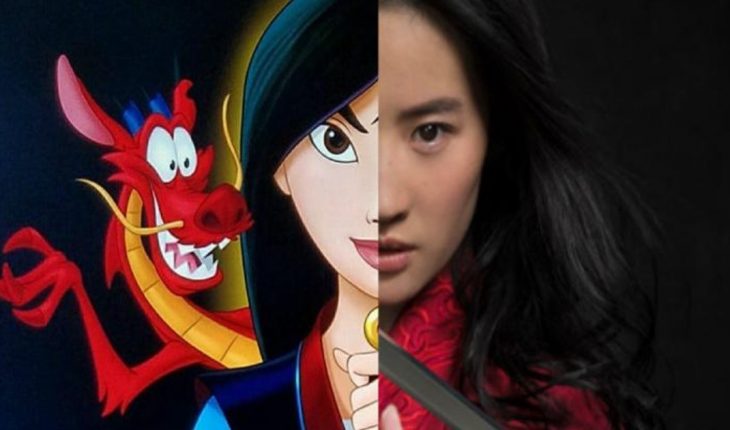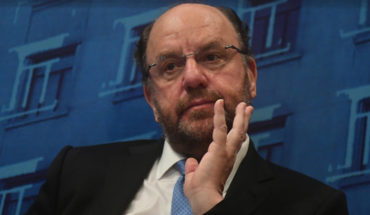The premiere of Mulan’s live action last Friday on the Disney+ streaming platform divided the waters: on the one hand, fans of the original film were outraged by the lack of classic songs, the absence of some much-loved characters and a change in the tone of the story, much more solemn than its animated counterpart. For her part, critics praised her precisely for these same reasons and for leaving aside some old-fashioned Western preconceptions about Eastern culture. In this note we collect the main changes between the animated version of Mulan (1998) and its brand new remake live action, directed by Niki Caro:
The Chi
The concept of vital energy flowing through all people is one of the fundamental principles of ancient Chinese philosophy, integrated into its traditional medicine and other disciplines, such as different types of therapy and martial arts. Without giving too many explanations, Mulan’s new story incorporates this principle as one of the main reasons for Mulan’s extraordinary abilities. However, she is instructed as a child by her father to hide this quality, which is reserved only for warriors. In his quest to protect her and seek honor from her family, she explains to a little Mulan that women cannot be warriors, only men. In this way, Mulan (Liu Yifei) grows up suppressing her potential and is only encouraged to unleash it when she is part of the militia posing as a man, and proving to be a better warrior than all her companions. The incorporation of this concept operates as a kind of analogy of the “glass ceiling” and in all the ways in which women are oppressed by patriarchal society and must strive twice as hard as any of their male peers to be considered an equal. In the original film, Mulan is an ordinary girl who shows no extraordinary potential and acquires her combat skills through arduous training, which is also present in this version.
Men of action
One of the main changes in the live action version was known well in advance of its premiere and sparked outrage from fans around the world. General Li Shang is Mulan’s romantic interest in the original film, considered by many to be a bisexual icon, as he falls in love with her believing he is a man. However, it was advanced that in this version the battalion was to be run by Commander Tung, a much older man (played by Donnie Yen) who has no romantic interest in her, nor vice versa. Producer Jason Reid explained that they decided to skip this romance because of the power dynamics between the characters.
“Having a commanding officer who is also your love interest made us uncomfortable and we didn’t think it was appropriate.”
However, the romance was not completely eliminated, as Mulan develops a very special bond with one of his peers, the young and attractive Chen Honghui (played by Chinese-born New Zealand actor Yoson An). In this way, Mulan enters into a close relationship with one of his peers, rather than a superior. And in a rather intimate scene, when he still thinks it’s a man, he recognizes it as his “equal.” While romance is more subtle than in the animated film, this also responds to a growing Disney tendency to minimize the romantic interest of its protagonists by virtue of its mission, which began with Elsa in Frozen (2013) and continued with Moana (2016).
Mushu
In the quest to make a less childish and more respectful film with the representation of Chinese culture, Mulan’s live action made one of the most controversial and fan-critical decisions: the elimination of Mushu, the popular talking dragon sent by Mulan’s ancestors to guide and protect her on her mission. Not only did he become one of the most beloved characters in the 1998 animated classic, but it also functioned as a comic relief from a film with much more humor and popularized some of the most remembered phrases of that one, which today continue to be reproduced on social networks.As a kind of homage to the beloved dragon, but more in line with the sober and emotional tone of the new version, Mulan’s father prays to his ancestors and summons the protector of the family: a phoenix. The mythical and beautiful animal fulfills the function of guiding Mulan and accompanying her on his journey, as well as symbolizing the young woman’s warrior spirit and the resurgence of her vital energy in times of need, but – unlike the classic sidekicks of Disney princesses – she does not give a word. In turn, little Cri-Kee (Mushu’s companion and Hua family’s lucky charm) is personified in live action by Cricket, a charming young man who is Mulan’s partner in the battalion.
The Witch
Disney has a long tradition of antagonizing women in its animated films, usually witches with princesses. But the new “villana” they incorporated in this live action version fulfills the function of being the only female warrior in a world of men, who empathizes with Mulan and recognizes in her another powerful warrior, although she chose a completely opposite path. Xian Lang, unlike Mulan, decides not to hide his chi and use it to earn the respect of his peers, although he wishes he had done so in a more honorable way. Between the two are built interesting parallels that will give rise to some of the most exciting scenes of the film. With the addition of Xian Lang (played by Gong Li) and mulan’s sister character, the film also passes bechdel’s test, a merit to consider in terms of female representation, being one of the Disney films that most empowers her heroine and the first in this live action round directed by a woman. Both characters also exist depending on contrasting Mulan’s choices with what he might have been if he chose another path: a devoted wife like his sister Hua Xiu, if she decided to marry as a way to bring honor to her family, or a powerful sorceress capable of transfiguring herself and using her strength for evil, such as Xian Lang, who was once also a rejected young woman and exiled for her extraordinary determination and abilities.
Loyal, Brave and Authentic
Some changes to the new version are meant to empower our heroine even more than the 1998 animated film, when she became a feminist icon who defies gender roles. For starters, in this version Mulan doesn’t cut his hair to go to war. Part of his house with his father’s armor, horse and sword engraved with the family motto, but keeps his long hair, which he hides in a impeller just like in the original. Inspired by her encounter with Xian Lang, she herself chooses when to reveal her true identity to the battalion and does so on her own terms, rather than because of her injuries and public humiliation, as was the case in the animated version. The end of the film has a few radical changes, but it’s just as epic. When Mulan warns his battalion that Bori Khan (the leader of the Rouran army who replaced Hun Shan Yu from the animated version) is still a threat to the Empire, they not only believe him, but also follow him into battle in the imperial city. Unlike the Emperor in the animated film, the character played by Jet Li lives up to his martial arts skill and confronts the villain in a duel away from the palace. This causes Mulan’s final battle to take place completely differently from the original, as does the celebration for his victory and eventual return to his family.
In this note:





